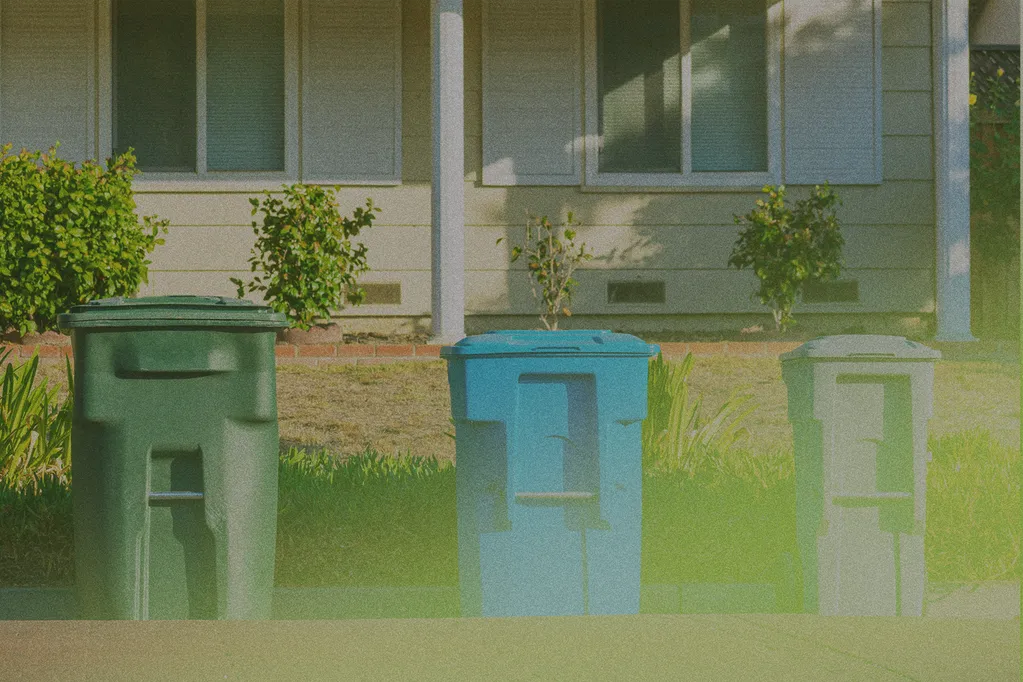Where does trash go after we throw it out? The answer isn’t as simple as “the landfill.” That’s just one of several destinations, depending on what you’re throwing away and how it’s handled once it leaves your home. In some cities, waste is incinerated to create energy that feeds into the local power grid. For discarded electronics, the journey is often much longer since many of these items are shipped and processed overseas.
Make a Difference by Recycling
Recycling is one of the best options for managing waste because it allows materials to be reformed and reused. It doesn’t apply to everything, but plastic bottles, milk cartons, cereal boxes, mail, newspapers, glass, and cardboard products can all be recycled. If you’re unsure what qualifies where you live, check your local municipality’s recycling guidelines.
According to the EPA, more than 70% of waste in the United States is recyclable; however, we only recycle approximately 30% of it. That means recycling even a small portion of your household waste makes a significant difference.
And that difference adds up fast. When recyclables are properly sorted and cleaned, they can be turned back into new packaging, building materials, and even clothing fibers within weeks. By contrast, when these same items are tossed into the trash, they take up landfill space and can take hundreds of years to break down.
Where Trash Goes After Collection
1. Collection and Curbside Pickup
Once trash leaves your hands, it’s collected by local sanitation crews or private waste haulers. Most cities and towns follow a scheduled pickup system, using large trucks designed to compact the trash as it’s loaded. This compaction step reduces the overall volume, allowing each truck to carry several tons of waste before returning to a disposal site.
Collection may look simple from the street, but in reality it involves intensive planning and coordination. Each neighborhood is divided into routes that optimize fuel use and minimize travel time. Some cities use separate trucks for recyclables, organic waste, and general trash, while others collect everything together and sort it later.
2. Transfer Stations
After collection, trucks deliver their loads to local transfer stations, where trash is unloaded, weighed, and inspected. The waste is then compacted again and placed into long-haul trailers that can transport much larger quantities than neighborhood trucks.
Transfer stations act as a middle point between homes and final disposal sites. Here, recyclables or hazardous materials may be separated from the general waste if sorting hasn’t already taken place. From there, the remaining garbage is prepared for its next destination, which is either a landfill, an incinerator, or a recycling plant.
3. Material Recovery Facilities
Some transfer stations double as material recovery facilities (MRFs). They recover usable materials from mixed waste before it’s buried or burned. Workers and machines separate cardboard, glass, plastics, and metals using screens, magnets, and air systems.
In clean MRFs, recyclables have already been sorted at home, so they arrive separated and easier to process. In dirty MRFs, everything comes in together and must be separated onsite. Clean materials are baled and sent to manufacturers that turn them into new products, and contaminated or nonrecyclable items continue on to disposal.
4. Landfills
The majority of waste still ends up in landfills. These sites are not open dumps but engineered systems designed to isolate trash from the surrounding environment. Waste is spread out in layers, compacted by heavy machinery, and covered with soil at the end of each day to limit odors and pests.
Pipes installed throughout the site collect gases, mainly methane and carbon dioxide, created by decomposing organic matter and use it to generate electricity. Even with these improvements, the decomposition process is extremely slow, and items like paper and textiles can take decades to break down, while plastics may last for centuries.
5. Waste-to-Energy Plants
In some regions, garbage is sent to waste-to-energy facilities which use controlled incineration to burn trash at high temperatures, producing steam that turns turbines and generates electricity. The process reduces the volume of waste by up to 90%, leaving behind ash that is collected and tested for safety before being disposed of. Modern plants use advanced filtration and air-scrubbing systems to limit pollutants, but the environmental impact depends on how well the plant is maintained and what materials are burned.
6. E-Waste and the Global Waste Trade
When discarded properly, electronics are sent to specialized e-waste recycling centers where devices are dismantled, and components like copper, aluminum, gold, and rare earth metals are extracted. However, a large portion of e-waste still ends up shipped overseas.
Countries such as Ghana, India, and Vietnam receive thousands of tons of electronic waste every year. There, workers manually break down devices to recover metals, often without protective equipment. The remaining plastic and chemical waste are left behind, creating severe environmental and health risks. This global waste trade has sparked ongoing debate. Some argue it supports recycling economies in developing nations, while others view it as shifting pollution from wealthier countries to poorer ones.
7. Composting and Organics
Organic waste, including food scraps and yard trimmings, doesn’t belong in landfills. When buried, it decomposes without oxygen and releases methane. Composting facilities take this material and allow it to break down naturally in controlled conditions, turning it into nutrient-rich compost that can be used to improve soil.
Some cities now collect food waste curbside, sending it to industrial composters or anaerobic digesters. These digesters use microorganisms to convert organic waste into biogas and fertilizer, providing an environmentally friendly way to reuse what would otherwise rot in a landfill.
Working Toward Zero Waste
Every item you throw away ends up somewhere. It might be recycled into new material, burned for energy, turned into compost, buried underground, or shipped to another country. Each path depends on the type of waste, the local infrastructure, and how carefully you separate it before disposal. The less we waste, and the more we recycle and compost, the shorter and cleaner that journey becomes.

